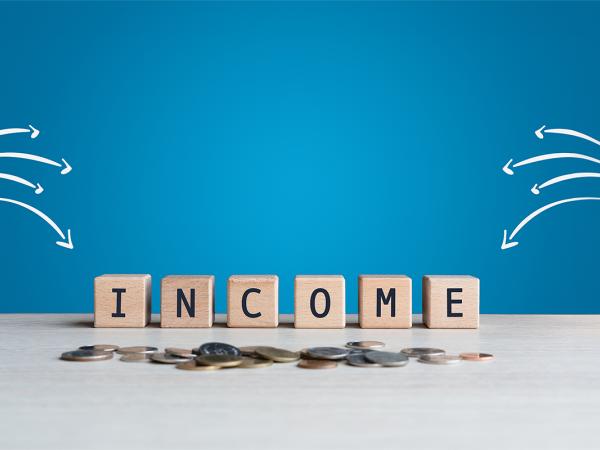Act now if you are affected by the new self-employed tax year basis rules
The change to the new ‘tax year’ basis (also known as basis period reform (BPR)) from the 2024/25 tax year onwards means that 2023/24 is a transitional tax year as we move to the new rules. This means the 2023/24 tax return will be more complicated than usual for affected sole traders and partners in partnerships. If you have unused overlap relief, you must use it within the 2023/24 tax year or lose it.
We explain below how HMRC can help you obtain overlap relief figures but as it may take some time you need to act now if you need this information from HMRC. If you are a paper tax return filer, it is unlikely you will get your figures in time to meet the 31 October paper filing deadline (in which case see below about what to do). If you are an online filer, then it is recommended you start your 2023/24 tax return as soon as possible because if you leave it too late to ask HMRC for help- you may not get the figures until after the 31 January 2025 online filing deadline. This article explains who needs to ask for this extra information, how you should contact HMRC and why you need to ask HMRC as soon as possible.

Content on this page:
Who is affected by BPR?
You are affected by the new rules if you are self-employed or a partner in a business partnership who either:
- has an accounting period not ending between the dates 31 March to 5 April inclusive; or
- has an accounting period ending between the dates 31 March to 5 April inclusive but has unused overlap relief (this could have arisen when the self assessment tax system was first introduced).
We explain in detail what BPR is and how unincorporated businesses may be affected on our webpage, Trading income: basis period reform.
If you are impacted by basis period reform you need to check if you have any unused overlap relief. It is important you do this because any overlap relief not used in the 2023/24 tax year will be lost and so will be unavailable to be used to reduce your trading profits in the future.
For more information on how overlap relief may have arisen see our guidance on overlap profits.
How do I check my overlap relief position?
If you think you may have overlap relief to use in the 2023/24 tax year, then you need to include this on your 2023/24 self assessment tax return.
You may already know what overlap relief figure to include but if you do not then you may be able to look it up on previously submitted tax returns:
- Any overlap profit should have been included on the self-employment full supplementary pages (SA103F) box 70, page SEF4.
- Any overlap relief used should have been disclosed at box 69 on the self-employment full supplementary pages (SA103F).
- To calculate the amount of overlap relief left to use in the 2023/24 tax year, you should look at box 70 of the 2022/23 tax return.
However, HMRC understands that some business owners may not be able to find this information from their previous tax returns and want to help these taxpayers identify any unused overlap relief. To do this they have set up an online form which you can complete on GOV.UK.
To complete the online form you will need to log on to your government gateway account. HMRC will ask a series of questions about your self-employment or partnership – it is important to provide HMRC with as much accurate information as you can. Inaccurate or missing information may result in a delay in HMRC providing the figures you need for your tax return – but don’t be put off asking HMRC for help if you can’t answer all their questions!
After submitting the request, HMRC will email confirming receipt of your completed online form. This will include a submission number which you should keep in case you need to contact HMRC about your overlap relief position. HMRC will then look up relevant information in their records. Based on this and the information provided in the form, HMRC hope to be able to tell you the overlap relief figure, or if not, they hope to be able to provide information such as profits etc., which will enable the overlap relief figure to be calculated.
Please note if you are unable to use the online form it is possible to call or write to HMRC to request this information. However, we understand the quickest way is to use the online form wherever possible.
When should I complete the online form?
If you need to complete an online form- it is recommended that you complete it as soon as possible.
If you are filing a paper tax return and need to request information about your overlap relief position then it is unlikely that you will receive this from HMRC before the 31 October 2024 filing deadline. If this is the case then we explain what you should do below.
It is anticipated that many self-employed and partners impacted by BPR will wait until close to 31 January 2025 (the filing deadline for online tax returns), to request their overlap relief information. Although HMRC are aiming to respond to most online forms within 15 days, this response time may become significantly longer if many people request their overlap relief information at a similar time. It is possible to check the progress of your online form on GOV.UK.
By starting your tax return and requesting the information you need now, it will give HMRC longer to try and help you before the January deadline. There is information to help you complete your tax return on our self-employment web pages and in our self-employment guide.
If you do not request the information in sufficient time for HMRC to respond before 31 October paper return or 31 January online filing deadlines, you may have to use an estimate or provisional figure for your overlap relief on your tax return. You would then need to amend your 2023/24 tax return with the correct information at a later date. Therefore, it would be simpler to avoid this scenario by starting your tax return and requesting the overlap relief from HMRC sooner rather than later.



